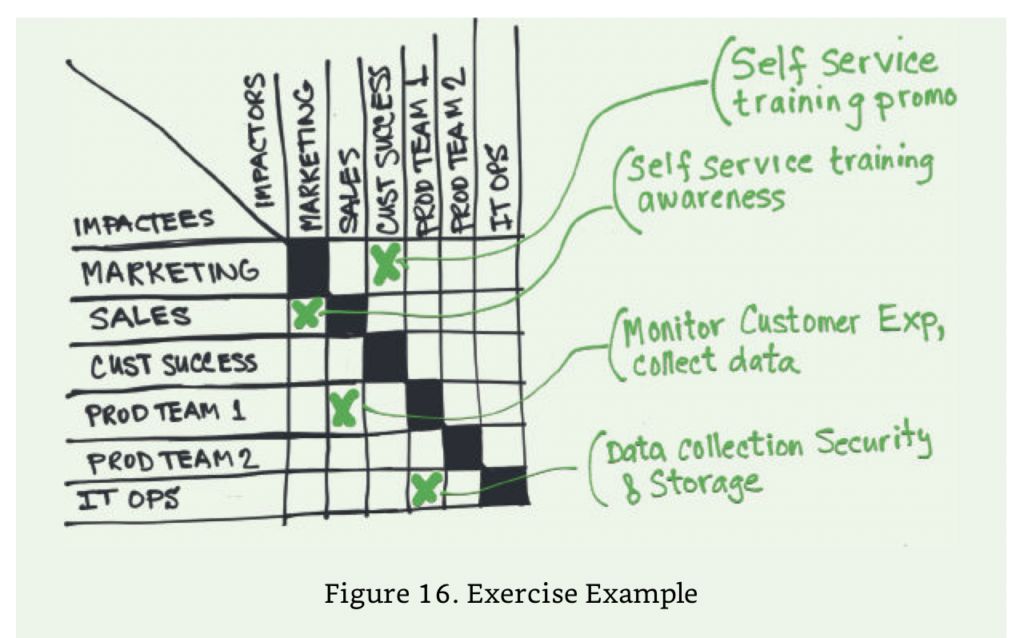In our work with Cyara customers, the Domain Consulting team has found that many organizations are struggling with maintaining alignment between and within their business and IT teams while working to increase the speed of their deployments. This point was reinforced during an Agile-focused panel at Cyara Xchange 2018 and also in conversations I had throughout the event.
In my last post, I talked about ways to get business and IT working from the same CX agenda. In this post, I’d like to talk some more about organizational alignment between the business and technology sides, as it is key. I will examine how maintaining alignment requires prioritization, feedback loops, and coordination.

Alignment from the Beginning
Prioritizing
As part of their Agile processes, the portfolio and product management teams (which typically fall within the business side) within some organizations adopt a Kanban approach to visually depict workflows. This categorizes tasks that are ‘to do,’ ‘doing,’ and ‘done,’ and outlines a clear direction from the beginning of the project. These two teams, with input from architects and subject matter experts as required, will determine which epics (often large, multi-part projects) should go on the Kanban board.
For epics to get on the ‘to do’ list or backlog, the portfolio and product management teams need to create short-form business cases detailing the ‘what,’ and the ‘why’ (including lagging indicators of success) of a project. They will outline some user stories, which will form the initial set of requirements. For each user story, they will define the leading indicators of success to know if the project is on the right track. Developing this initial set of user stories and starting to flesh out the effort and resources required is part of the process of backlog grooming, and allows for prioritization of epics.
When epics are moved from ‘to do’ to ‘doing’ — which is when they are scheduled to be done by the Development team — there needs to be enough information for the Dev team to start determining the effort involved and how much they can do within a single sprint.
Using Feedback Loops
Along with prioritization, feedback loops are also necessary so Dev knows they’re working on the right tasks. Feedback loops ensure all stakeholders know progress is being made towards achieving the business’s outcomes, and are key to the reprioritization process. Even when a project is in the ‘doing’ state, if at some point the return of future/new work on the epic is less than starting on a new epic, the business, portfolio and product management teams might decide to close down the epic to start on the new one. And if the feedback loop shows that the solution is not achieving the right outcomes, a new direction might be taken, or the epic might be closed down. Feedback loops help to ensure the Dev team is aligned with the business throughout the process.
Staying Aligned When Delivering
One of the key aspects of DevOps is that deployments are made to production at any time and not tied to releases. Unlike Agile, there is no waiting two weeks for the end of a sprint to pass on to the Operations team for deployment — it is completely decoupled. In DevOps, organizations deploy whenever they have something stable that can go into production because Operations is part of the team. In many cases, this means a release happens when the business decides to make the features or the capability accessible to customers. Ultimately, the product managers and the business are actually in charge of when things are released.
This decoupling of the business and the DevOps teams doesn’t take away the need for coordination and alignment. This is especially true as organizations work towards deploying faster and more frequently. Even within the business side — marketing, sales, training — there needs to be coordination. When a decision is made by product management to release, for example, there needs to be communication to those that are impacted to make sure they’re aligned.
If, as part of a new release, the marketing team decides to do some A/B testing on a web page, they need to make the customer service team aware of this to avoid potential frustrations. If the agents in the contact center don’t know that customers are seeing these alternate test pages (with, for example, different form fields), that may create a subpar customer experience. The marketing team needs to flag these changes as far ahead as possible.
Another example may be giving the training side of your organization as much notice as possible about new features so they are not playing catch up with creating materials.
One of the practical steps you can take is to create a dependency matrix that is aligned with features. It identifies the impactees and impactors for each feature. With the marketing initiative I mentioned before, for example, you would identify the impactor as the marketing team, and customer service and potentially customer success staff as impactees in a matrix similar to the one shown below.

Maintaining organizational alignment is critical to the success of any CX improvement initiative. Through prioritization, feedback loops, and team coordination, this process can become less challenging.
You can learn more about Agile development by watching the Transforming Your Development Organization to Support an Agile World panel from Cyara Xchange 2018.
To learn more about how Domain Consulting can help you, contact us, or get in touch with your Account Executive.